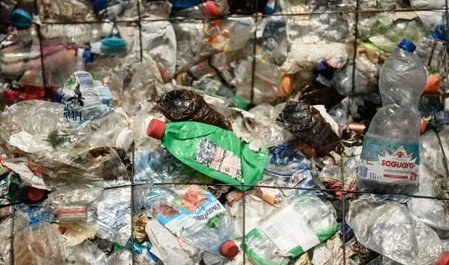A researcher at Georgia Tech has created a new method to recycle plastic by copying the structure of seashells. This breakthrough, led by aerospace engineering professor Christos Athanasiou, promises to make recycled materials stronger and more reliable, tackling the global plastic waste crisis as of September 2025.
The Seashell Inspiration Behind the Innovation
Nature often provides smart solutions to human problems. Athanasiou looked at how seashells build tough layers from brittle materials. He applied this idea to plastic recycling, mixing recycled bits with a special adhesive that acts like mortar between bricks.
This approach creates a composite material that holds up well under stress. Tests show it reduces the uneven strength often seen in recycled plastics. Manufacturers could use it for items like flooring or packaging that last longer.
Experts say this method stands out because it keeps the original plastic’s performance while making recycling more efficient. It addresses a key issue where mixed plastics weaken during reuse.
How the New Method Works
The process starts with common recycled plastics, such as high-density polyethylene from bottles and wraps. Athanasiou’s team breaks them into small pieces and bonds them with a bio-inspired glue.
This creates a layered structure similar to a seashell’s nacre, which is strong yet flexible. The result is a material that performs consistently, even when made from varied waste sources.

In lab tests, the new composites showed up to 80 percent less variability in strength compared to standard recycled plastics. This reliability could open doors for wider use in construction and consumer goods.
One challenge remains scaling up production. Athanasiou notes it will take time to adapt this for large factories, but early results look promising.
Impact on Global Plastic Waste
Plastic pollution is a massive issue worldwide. Each year, people produce about 400 million tons of plastic, but only a small fraction gets recycled properly. This new method could change that by turning waste into valuable resources.
For example, single-use items like pallet wraps often end up in landfills. With this seashell-inspired tech, they could become durable products, cutting down on new plastic needs.
Recent data from environmental groups shows recycling rates hover around 9 percent globally. Innovations like this aim to boost that number and reduce ocean pollution.
- Reduces landfill waste by reusing hard-to-recycle plastics.
- Lowers costs for manufacturers through efficient material use.
- Supports eco-friendly goals in industries like packaging and building.
Comparison to Other Recycling Advances
This Georgia Tech work builds on past ideas but goes further. Earlier efforts, like using crab shells for biodegradable films, focused on alternatives to plastic. Athanasiou’s method improves recycling of existing plastics instead.
In 2025, other breakthroughs include a Japanese plastic that dissolves in seawater and leaf-inspired bioplastics from Washington University. These show a trend toward nature-based solutions.
Here’s a quick look at key features:
| Innovation | Key Feature | Potential Impact |
|---|---|---|
| Georgia Tech Seashell Method | Strengthens recycled plastic with layered structure | Boosts reliability for construction materials |
| Japanese Dissolving Plastic | Breaks down in seawater within hours | Reduces ocean pollution from waste |
| Washington University Leaf Bioplastic | Fully biodegradable at room temperature | Offers sustainable packaging options |
These developments highlight growing efforts to fight plastic waste through science.
Challenges and Future Outlook
Not everything is smooth sailing. Scaling the process for mass production requires more research and investment. Athanasiou’s team is working with industry partners to test real-world applications.
Regulatory hurdles also play a role. Governments push for better recycling, but standards vary by country. In the US, new policies in 2025 encourage innovations like this through grants.
Despite obstacles, the potential is huge. If successful, this could cut virgin plastic use by significant amounts, helping meet global sustainability targets.
Experts predict that by 2030, methods like this might recycle up to 30 percent more plastic effectively.
Why This Matters Now
With climate change in the spotlight, innovations like this come at a critical time. Consumers demand greener products, and companies face pressure to reduce waste.
This Georgia Tech discovery not only solves technical problems but also inspires other researchers. It shows how looking to nature can lead to practical fixes for everyday issues.
As plastic production keeps rising, solutions that make recycling better are vital. This method could play a key role in a cleaner future.
What do you think about this seashell-inspired recycling breakthrough? Share your thoughts in the comments below and spread the word to help raise awareness about sustainable innovations.
